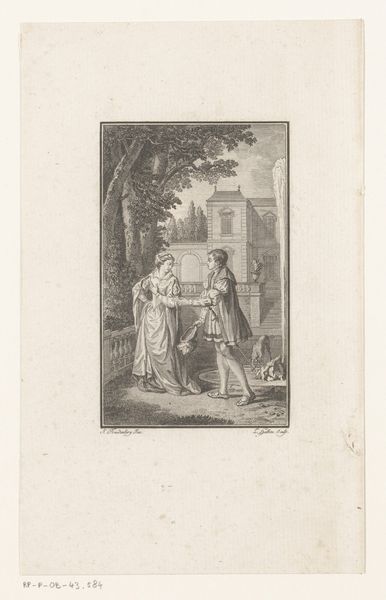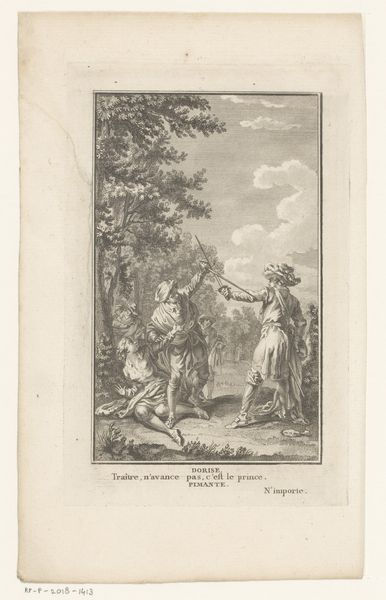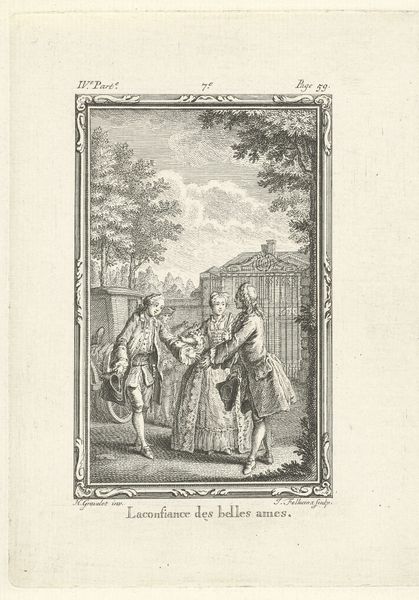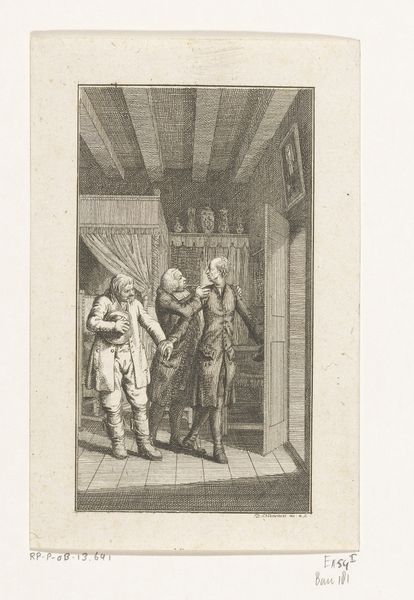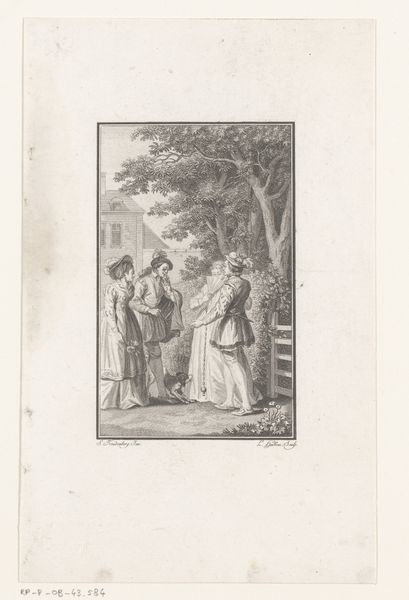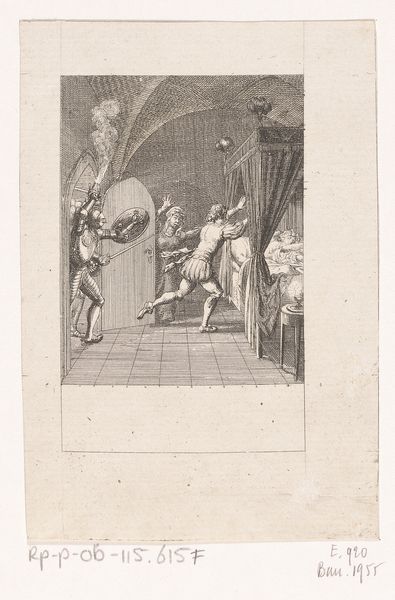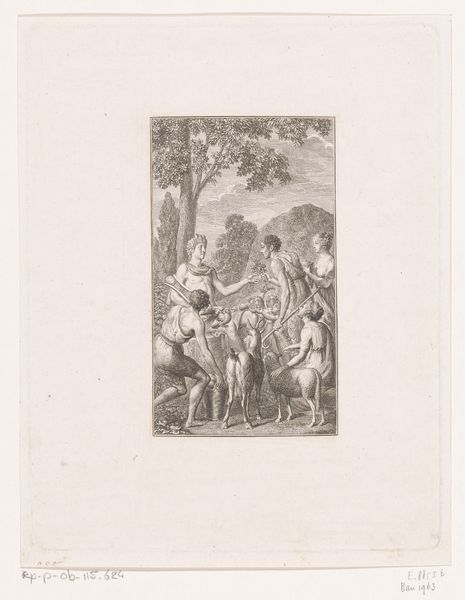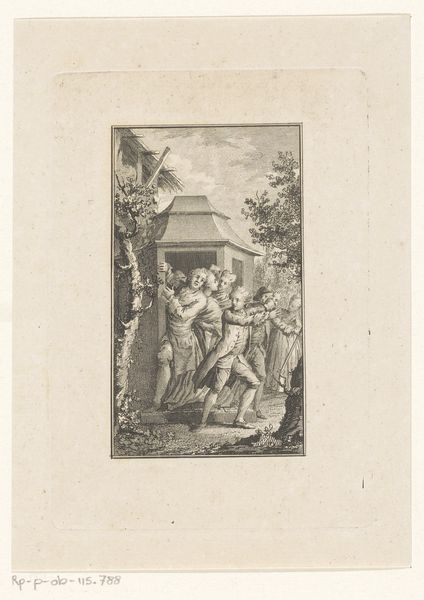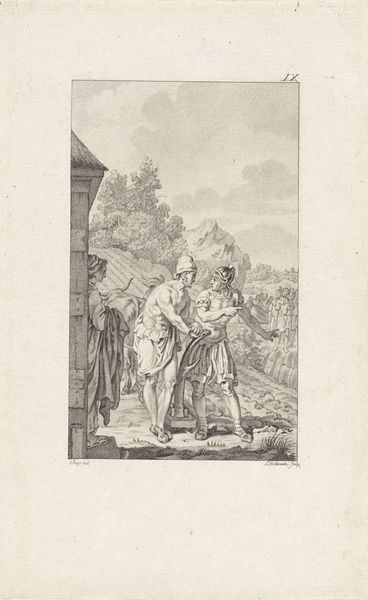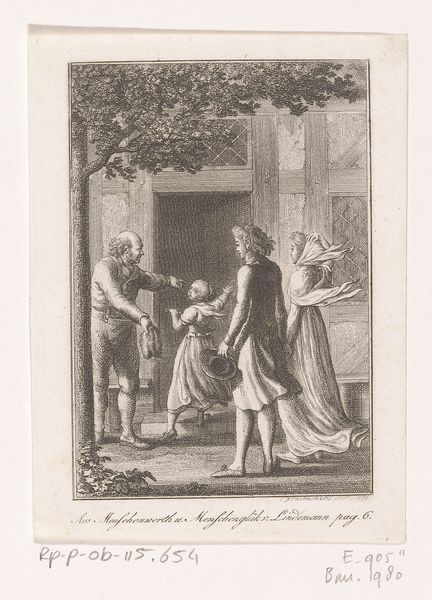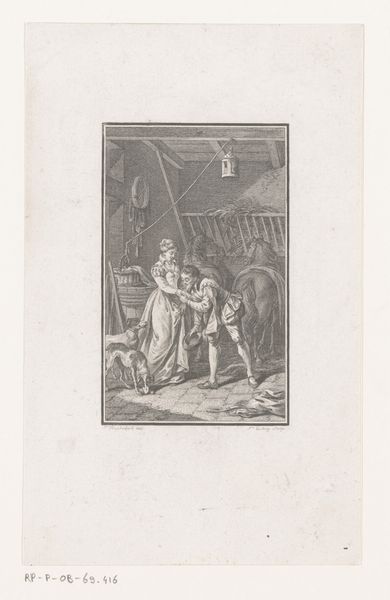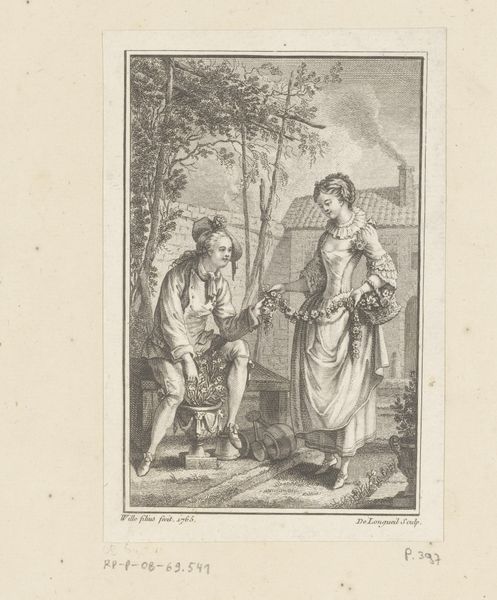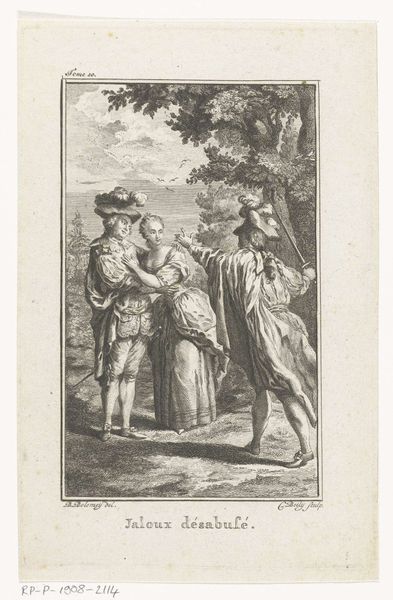
drawing, print, paper, engraving
#
portrait
#
drawing
# print
#
paper
#
romanticism
#
genre-painting
#
history-painting
#
engraving
Dimensions: height 152 mm, width 94 mm
Copyright: Rijks Museum: Open Domain
Curator: Here we have Daniel Nikolaus Chodowiecki's "Ontmoeting tussen vrienden," created around 1795. It’s an engraving, a print on paper now held here at the Rijksmuseum. Editor: It strikes me as a staged encounter, a tableau of social propriety rather than a genuine moment. The composition feels a bit stiff, despite the apparent warmth. Curator: Well, consider the period. Romanticism was blooming, but so were rigid social expectations, particularly after the French Revolution. Chodowiecki often captured these tensions, the clash between sentiment and structure. Notice the placement of the figures. The man emerging from the doorway—his almost frantic greeting— juxtaposed against the family patiently waiting outside, their bodies suggesting rootedness, stability. Editor: Yes, the contrast is striking. There's the implied urgency of the single man entering the domestic space, contrasted against the placid solidity of the family grouping on the right. And above them, a cherubic figure oversees the scene—a commentary on divine approval, perhaps? Curator: Precisely! Chodowiecki uses these visual cues—the cherub, even the allegorical figures at the base—to embed meaning. The friend, eager as he is, is stepping into a pre-established order. The family, especially with the protective stance of the mother and the inclusion of the child, represents virtue and the future. It’s not simply a genre scene. It’s a statement on societal roles and familial values. Editor: I see your point. There's also something inherently political in choosing to depict such scenes in this period. The very act of celebrating familial unity becomes a kind of quiet resistance to revolutionary upheaval. Were such depictions popular during this time? Curator: Hugely! Prints like these were widely circulated, shaping and reinforcing bourgeois values. Think of them as proto-photographs, intimate snapshots meant for contemplation and, crucially, imitation. They were teaching tools. Editor: That provides interesting context. The image now reveals itself not only as an image but also as an artifact that performed certain cultural work. Now I understand its function more fully. Curator: Indeed, it goes beyond mere sentiment. Editor: Yes, the image speaks to the period's concerns of order and change, love, and, the family. Thank you.
Comments
No comments
Be the first to comment and join the conversation on the ultimate creative platform.
